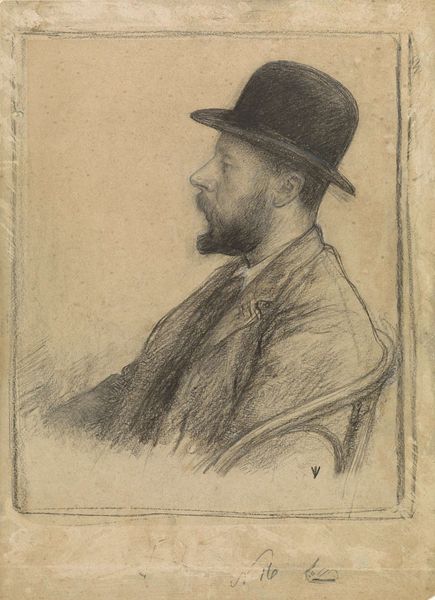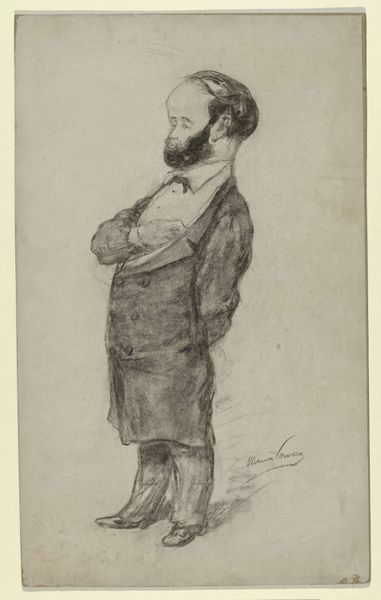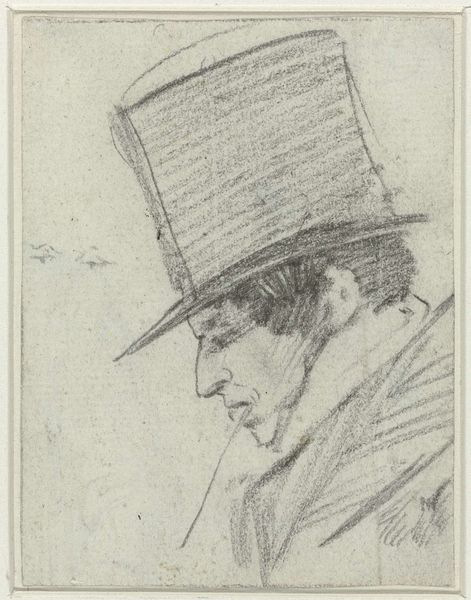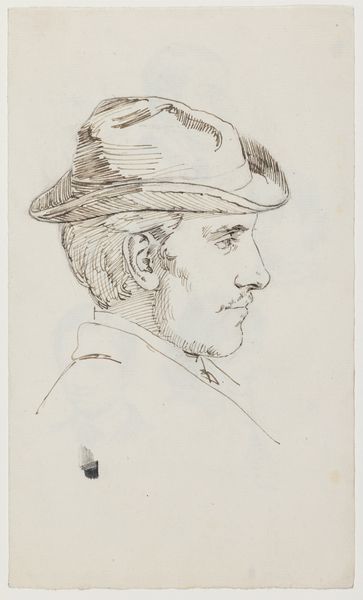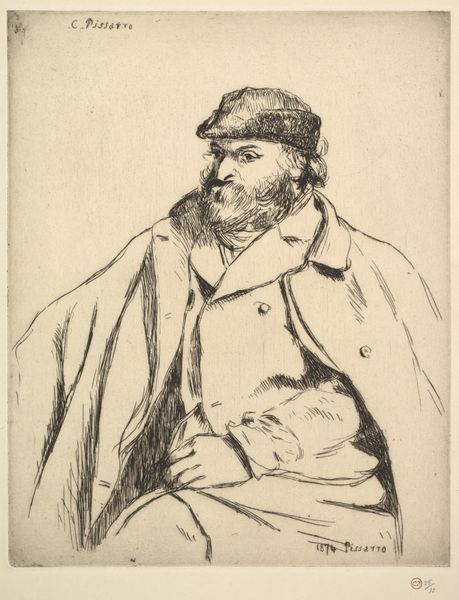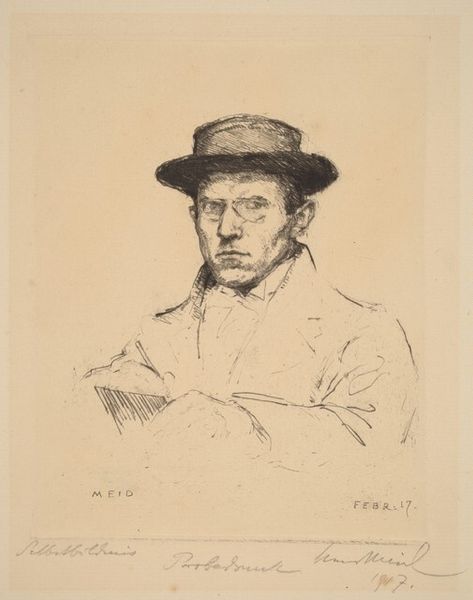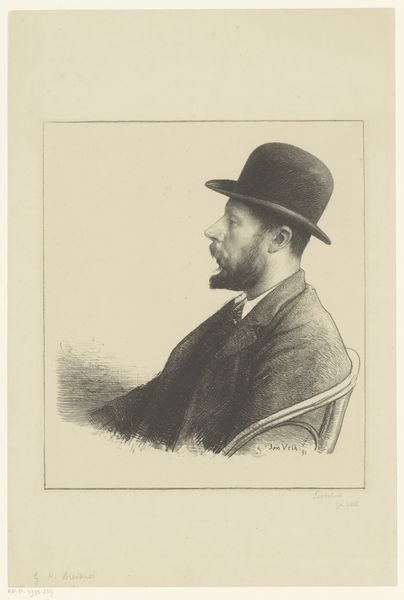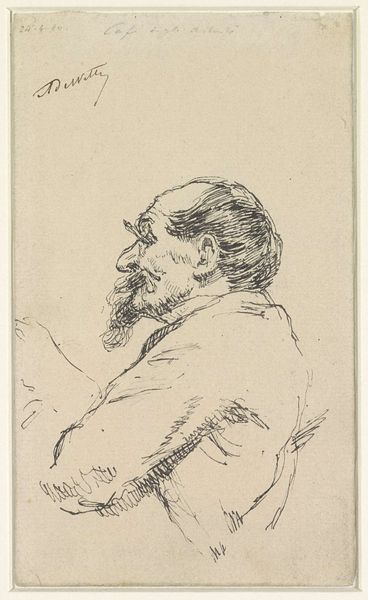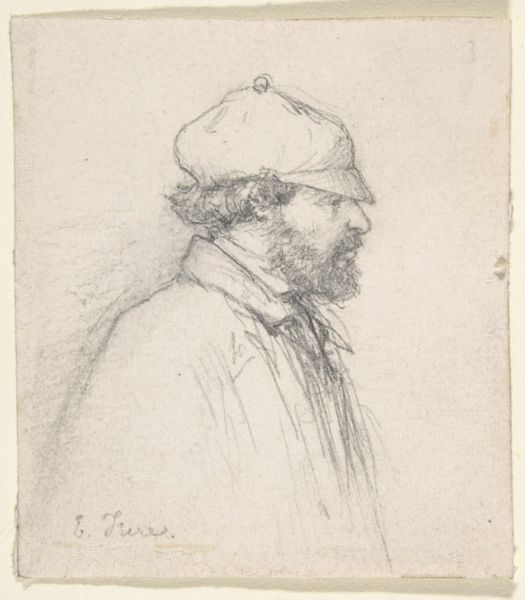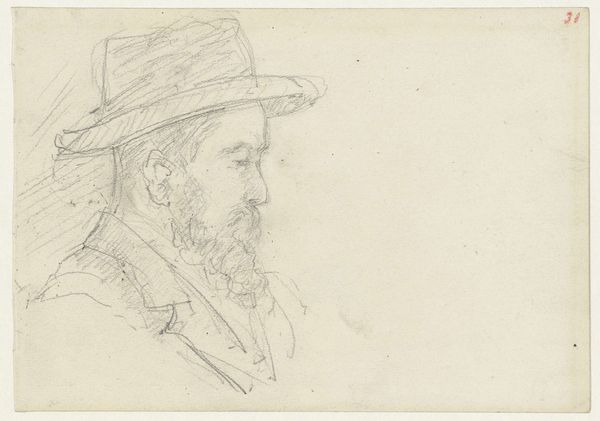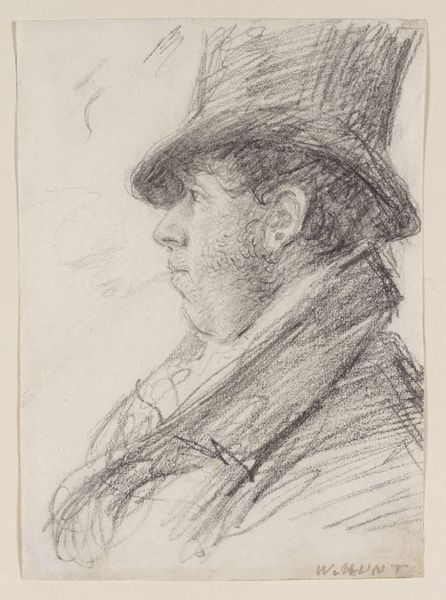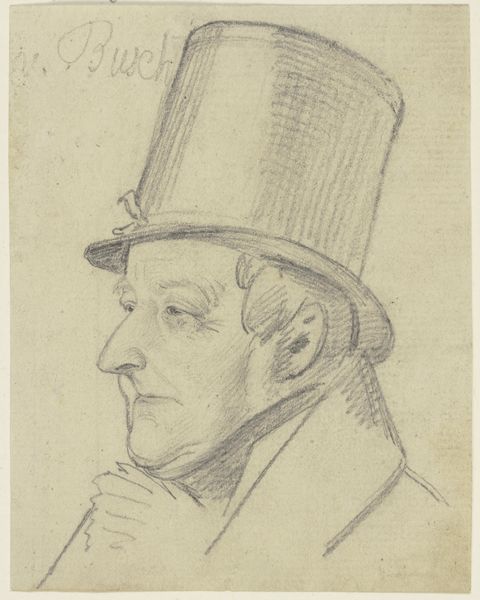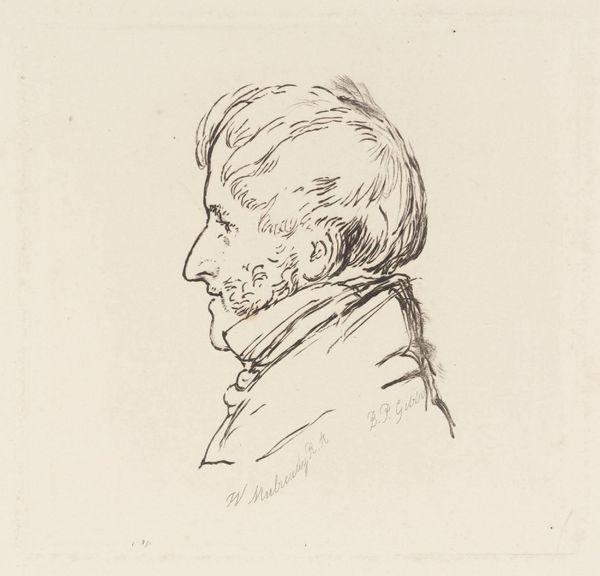
drawing, pencil
#
portrait
#
drawing
#
pencil
#
history-painting
#
realism
Dimensions: sheet: 1 1/4 x 1 13/16 in. (3.2 x 4.6 cm)
Copyright: Public Domain
Curator: Before us hangs "Portrait of Troyon," a 19th-century pencil drawing currently residing here at The Met. Editor: Immediately, I'm struck by the figure's severe profile. The lines are so economical, and yet the subject exudes a distinct gravitas. It is mostly rendered in grays, with sharp outlines on the right, softening into the page as it extends leftward; the rough lines offer the piece a remarkable visual tension, a still energy. Curator: Indeed. The materials themselves – the pencil, the paper – speak to a certain accessibility, a directness of artistic labor. No lavish oils or expensive canvas here. It emphasizes the importance of drawing as a foundational practice, regardless of economic limitations. Editor: But consider the precision with which the artist captures the textures – the beard, the fabric of the coat. There's an undeniable formal elegance even within the work's inherent simplicity. I think we should read into that. It is not mere reportage. Curator: Perhaps. But let’s think about who Troyon was: a celebrated animalier painter. This portrait captures the social networks, the labor involved. The artistic creation of celebrity isn’t solely the product of a single genius, but rather the output of the industry that has, arguably, devalued art altogether by bringing its worth into commodification. The pencil, here, signifies not just access but industrial proliferation. Editor: It's fascinating how you frame it in those terms. I find, simply from an appreciation of lines and shadows, the way that the strong hat creates visual authority, the softened shadows create introspection; an argument against mere replication is, thus, more convincing here. Curator: I see the figure as both individualized, and representative, within a particular milieu, shaped by production and consumption, with emphasis on ‘of its time,’ though still so beautiful in a material sense. Editor: A compelling read; a discussion where aesthetics and industry intertwine—much like the artwork before us.
Comments
No comments
Be the first to comment and join the conversation on the ultimate creative platform.
